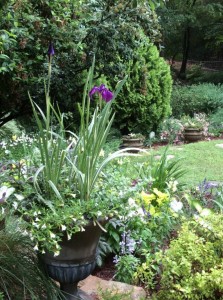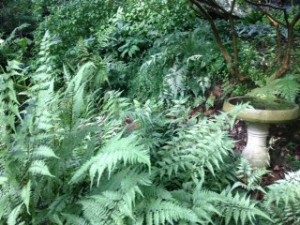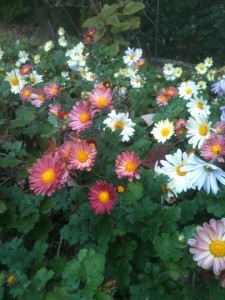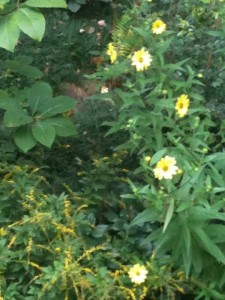 Are you frustrated with your gardening efforts…or lack thereof? Recently a friend and I were discussing work issues we encounter in our respective jobs when this subject came up. “Kris, I see what other people are doing in their gardens, and I look at mine and get so frustrated. Then I waste a bunch of time on Facebook and feel even worse.”
Are you frustrated with your gardening efforts…or lack thereof? Recently a friend and I were discussing work issues we encounter in our respective jobs when this subject came up. “Kris, I see what other people are doing in their gardens, and I look at mine and get so frustrated. Then I waste a bunch of time on Facebook and feel even worse.”
I told her quite quickly that, as smart as she was, she shouldn’t be so self-defeating. “Take one step at a time , one plant at a time,”, I said. I should have added that there is no “right” way to create a garden. “Garden design” is such an intimidating notion for many. Who is the arbiter of good garden design anyway? It’s your garden; do with it what you like and don’t be afraid of the garden police!
Of course, you want to do your homework if you’re planning to plant a tree or a lot of shrubs. No one should put a tree that will eventually grow 50′ tall three feet from their house or sun loving shrubs in the shade. Even if you’re a free gardening spirit, certain things must be thought out!
But choosing to create a path through your garden, deciding whether you’d like a bird bath to attract more feathered friends, contemplating where to put a piece of garden art you bought on a whim..,This is all part of creating your own garden space that reflects your personality.
 It’s so easy to become paralyzed with indecision before you take a first step, but, once that hurdle is jumped, the next one is easier. Think of it as gardening building blocks. Once you have the path, where does it lead and what can you discover at the end? Sometimes the hardest choices, once made, lead to more discovery.
It’s so easy to become paralyzed with indecision before you take a first step, but, once that hurdle is jumped, the next one is easier. Think of it as gardening building blocks. Once you have the path, where does it lead and what can you discover at the end? Sometimes the hardest choices, once made, lead to more discovery.
For others, it’s not so much indecision as lack of time or interest. New parents have young children to take care of; others are empty nesters and may be traveling and away from any garden activities for long stretches of time. For them, the ready-made landscape of a garden home or condo is just right for where they are in their lives.
 But for so many, like my friend, creating a beautiful outdoor home environment is a somewhat anxious endeavor that eventually simply immobilizes them. If you’re feeling this way, always remember it only takes one step, one plant, then the next step…small steps at a time. Learn what your plants need and provide that as best you can. Once you’ve been successful at one thing, try another. And you’ll find that, just like those building blocks, eventually something amazing will be your reward.
But for so many, like my friend, creating a beautiful outdoor home environment is a somewhat anxious endeavor that eventually simply immobilizes them. If you’re feeling this way, always remember it only takes one step, one plant, then the next step…small steps at a time. Learn what your plants need and provide that as best you can. Once you’ve been successful at one thing, try another. And you’ll find that, just like those building blocks, eventually something amazing will be your reward.

 With 2013 beginning with a wet, cool spring and the rain continuing into early summer, it seemed like we’d been transported into a different universe than Alabama, didn’t it? All the rain may have caused some complacency – everything seems so much lusher than it usually is this time of year…now the heat is here, though, and it seems certain we’ll be entering our usual summer pattern of hit and miss rain showers with lots of warmth and humidity…
With 2013 beginning with a wet, cool spring and the rain continuing into early summer, it seemed like we’d been transported into a different universe than Alabama, didn’t it? All the rain may have caused some complacency – everything seems so much lusher than it usually is this time of year…now the heat is here, though, and it seems certain we’ll be entering our usual summer pattern of hit and miss rain showers with lots of warmth and humidity… Established plantings in your landscape should be doing well, but be aware that new plantings of shrubs, trees and perennials will need supplemental watering this first summer – pay attention to them. The requirement for new plantings is an inch of water each week.
Established plantings in your landscape should be doing well, but be aware that new plantings of shrubs, trees and perennials will need supplemental watering this first summer – pay attention to them. The requirement for new plantings is an inch of water each week.





